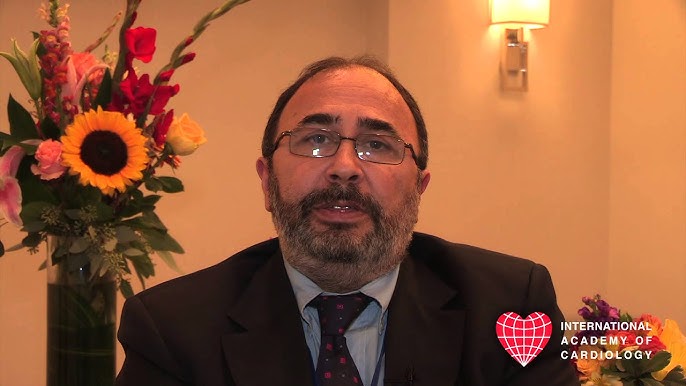Introduction
Dr. Ramón C. Hermida is a leading scientist in chronobiology and cardiovascular research whose groundbreaking work has revolutionized the treatment of hypertension. Focusing on biological rhythms and their effects on blood pressure, Hermida introduced chronotherapy to hypertension management, emphasizing the importance of timing when administering medication. Through major studies like the MAPEC and Hygia projects, he demonstrated that bedtime dosing of blood pressure medication could lead to significantly better health outcomes than conventional morning dosing.
This article delves into Ramón C. Hermida’s pioneering work, exploring his career, contributions, and the impact of his research on blood pressure management, aiming to enhance healthcare for millions worldwide.
Early Career and Research Focus

Ramón C. Hermida’s journey began with a strong foundation in physiology, where he became deeply interested in the human body’s internal timing mechanisms, known as circadian rhythms. These biological rhythms control numerous bodily functions, from the sleep-wake cycle to hormone production, with crucial implications for health. Early in his career, Hermida saw the potential of applying chronobiology—the study of biological rhythms—to medical research, particularly in blood pressure regulation.
This interest led him to focus on understanding blood pressure patterns across the day. Blood pressure is not static but fluctuates according to the body’s circadian clock, generally peaking during daytime activities and lowering at night. Hermida’s research underscored the importance of these fluctuations, revealing how irregular patterns can increase the risk of hypertension-related complications. His early work laid the groundwork for what would become an internationally recognized career in medical research.
Chronobiology: The Science Behind Biological Rhythms
Chronobiology is the study of biological clocks and rhythms, a field that examines how organisms adapt to regular changes in their environment, such as day and night cycles. In humans, these rhythms govern crucial aspects of physiological function, influencing everything from body temperature to alertness levels and hormone release.
Hermida identified blood pressure as one of the many physiological factors controlled by circadian rhythms. Under normal conditions, blood pressure dips at night and rises during the day, a pattern that supports cardiovascular health. However, in people with hypertension, these natural fluctuations are often disrupted, resulting in a phenomenon known as “non-dipping,” where blood pressure does not decrease at night. Hermida’s research emphasized the importance of studying these variations, as non-dipping is linked to a higher risk of cardiovascular events, such as heart attacks and strokes.
Blood Pressure Variability and Its Role in Cardiovascular Health

Hermida’s research went beyond simple blood pressure measurements, focusing on blood pressure variability—the changes in blood pressure levels over time. Traditional blood pressure monitoring typically relies on single measurements taken during doctor visits, providing only a snapshot of a patient’s blood pressure at that moment. However, Hermida advocated for ambulatory blood pressure monitoring (ABPM), a method that measures blood pressure at regular intervals over 24 hours, giving a comprehensive view of day-night fluctuations.
ABPM offers valuable insights, particularly for identifying patients with a non-dipping blood pressure profile. Non-dippers have been shown to have a significantly higher risk of cardiovascular events compared to “dippers,” whose blood pressure follows a healthy day-night rhythm. Hermida’s work demonstrated that tracking these patterns could help healthcare providers identify high-risk patients and personalize treatment plans, potentially reducing cardiovascular complications.
Chronotherapy: Revolutionizing Hypertension Treatment with Timing
Chronotherapy involves aligning medication timing with the body’s natural rhythms to maximize therapeutic effectiveness and minimize side effects. Hermida hypothesized that taking blood pressure medication at bedtime, instead of in the morning, could improve outcomes for hypertension patients. His research found that this timing approach could better control nocturnal blood pressure levels, reduce the non-dipping pattern, and ultimately lower the risk of cardiovascular events.
- The Bedtime Dosing Hypothesis: Hermida’s hypothesis that taking blood pressure medication at night could enhance its effectiveness was a novel concept. This idea was rooted in his observation of nocturnal blood pressure variations and the potential benefits of managing blood pressure in sync with natural rhythms.
- The MAPEC Study: In the MAPEC (Monitorización Ambulatoria para Predicción de Eventos Cardiovasculares) study, Hermida tracked over 2,000 hypertensive patients over several years, comparing outcomes between those who took their medication in the morning and those who took it at bedtime. The study results were groundbreaking, showing that patients who took their medication at bedtime had significantly better blood pressure control and a 61% reduction in cardiovascular events compared to those who took their medication in the morning.
- The Hygia Project: Building on the MAPEC study’s findings, Hermida launched the Hygia Project, a large-scale study involving over 19,000 participants. The Hygia Project confirmed the benefits of bedtime dosing, demonstrating that patients who took their medication at night saw a 45% reduction in the risk of cardiovascular events. The results solidified Hermida’s hypothesis and established bedtime dosing as a potentially superior strategy for managing hypertension.
The Impact of Hermida’s Research on Clinical Practice

Hermida’s research has transformed hypertension treatment strategies, encouraging doctors worldwide to consider chronotherapy as a viable option for managing blood pressure. For decades, most hypertension patients were advised to take their medication in the morning, with little regard for the body’s biological rhythms. Hermida’s work, however, emphasized that when patients take their medication can be as important as the type and dosage prescribed.
The findings of the MAPEC and Hygia studies have led to an increased adoption of bedtime dosing in clinical practice, particularly for high-risk patients with a non-dipping blood pressure pattern. By targeting nocturnal blood pressure, Hermida’s approach not only reduces the risk of cardiovascular events but also provides a more personalized approach to hypertension management.
Expanding Chronotherapy Beyond Hypertension
Hermida’s work has inspired further research into chronotherapy across various medical fields. Scientists are investigating whether timing medication based on biological rhythms could enhance treatment outcomes in conditions like cancer, diabetes, and psychiatric disorders. Hermida’s pioneering studies serve as a foundation for exploring chronotherapy’s potential beyond cardiovascular health, opening doors to new therapeutic strategies that respect the body’s natural rhythms.
Criticisms and Challenges
Despite its many benefits, Hermida’s research has also faced some criticism. While the MAPEC and Hygia studies provide compelling evidence for bedtime dosing, some experts argue that more extensive research is needed to validate these findings across diverse patient populations. Additionally, the complexity of biological rhythms means that individual responses to chronotherapy can vary, making it essential to carefully monitor and personalize treatment.
Another concern is the practicality of bedtime dosing for some patients. Lifestyle factors, such as shift work or inconsistent sleep schedules, could affect how individuals respond to medication timing. Further research is needed to develop guidelines that accommodate these variations while maximizing the benefits of chronotherapy.
Future Directions and Legacy

Ramón C. Hermida’s contributions to chronobiology and hypertension management continue to influence medical research and practice. His work has underscored the need to view hypertension not as a static condition but as one closely linked to the body’s natural rhythms. Future studies aim to explore personalized approaches to chronotherapy, taking into account factors like genetics, environment, and lifestyle.
Hermida’s legacy extends beyond his research. As a mentor, he has trained a new generation of scientists and healthcare professionals in the principles of chronobiology, ensuring that his insights into biological rhythms will continue to shape medical practice. His work has demonstrated the power of time as a factor in treatment effectiveness, providing a foundation for new advances in personalized medicine.
Conclusion
Dr. Ramón C. Hermida has made significant contributions to the field of hypertension and chronobiology, with research that has reshaped how blood pressure management is approached globally. His findings on blood pressure variability, the benefits of bedtime dosing, and the potential of chronotherapy have provided new tools for healthcare providers to reduce cardiovascular risk and improve patient outcomes. By aligning treatment with the body’s natural rhythms, Hermida’s work has introduced a new era of personalized medicine that prioritizes the patient’s unique biological profile.
Hermida’s legacy is one of innovation and transformation, reminding the medical field of the profound impact that timing can have on health. His research will continue to inspire future discoveries, providing hope for more effective, tailored treatments in hypertension and beyond.










